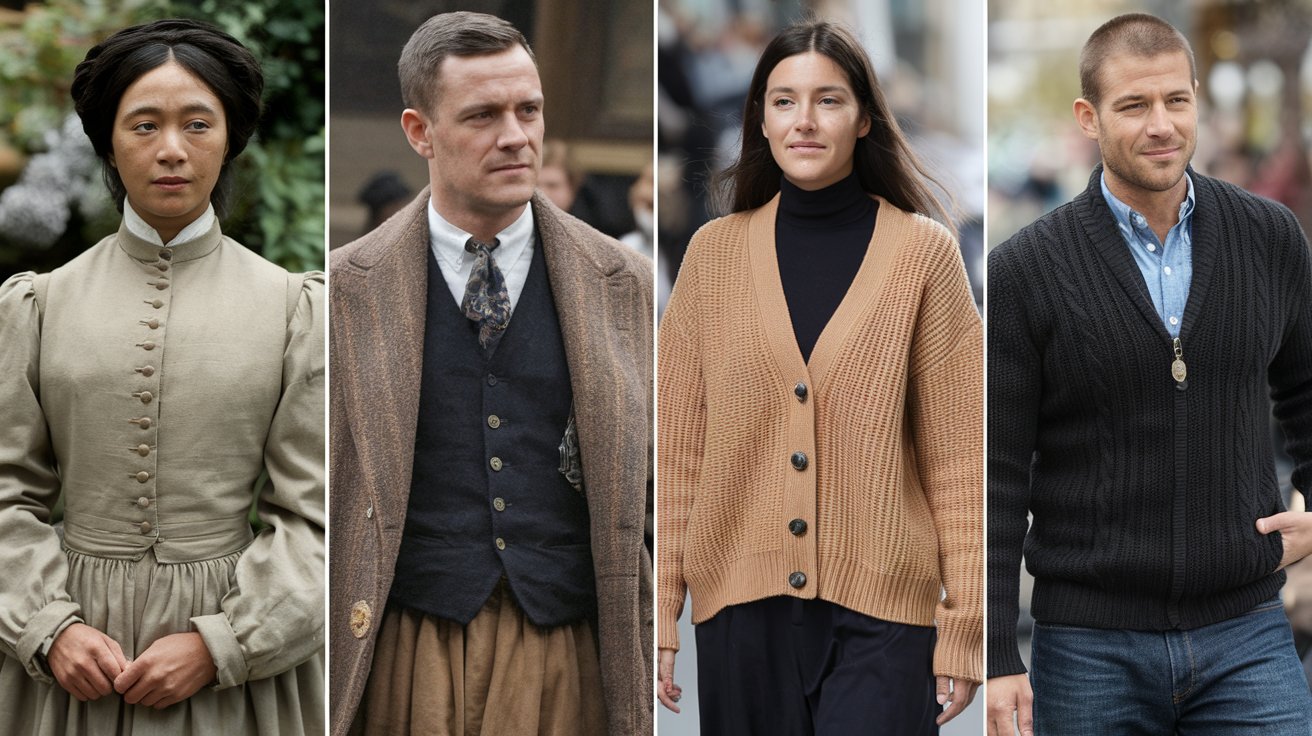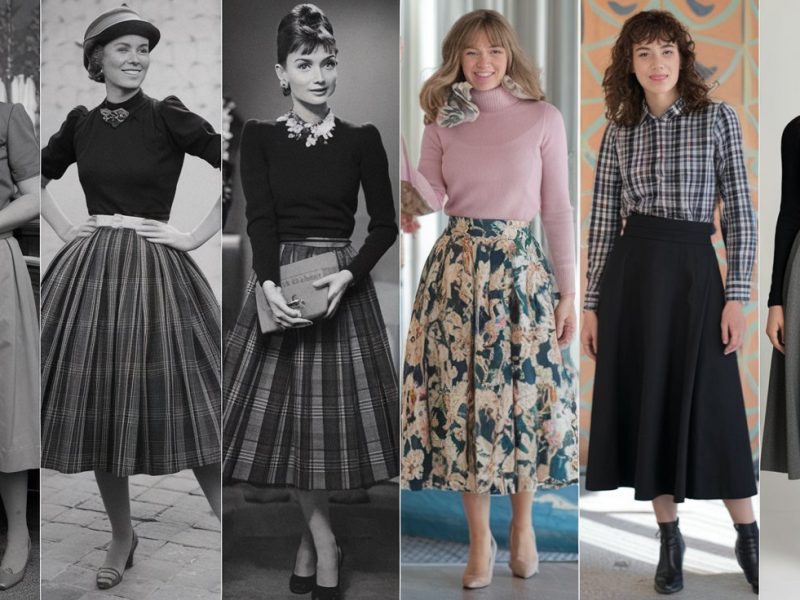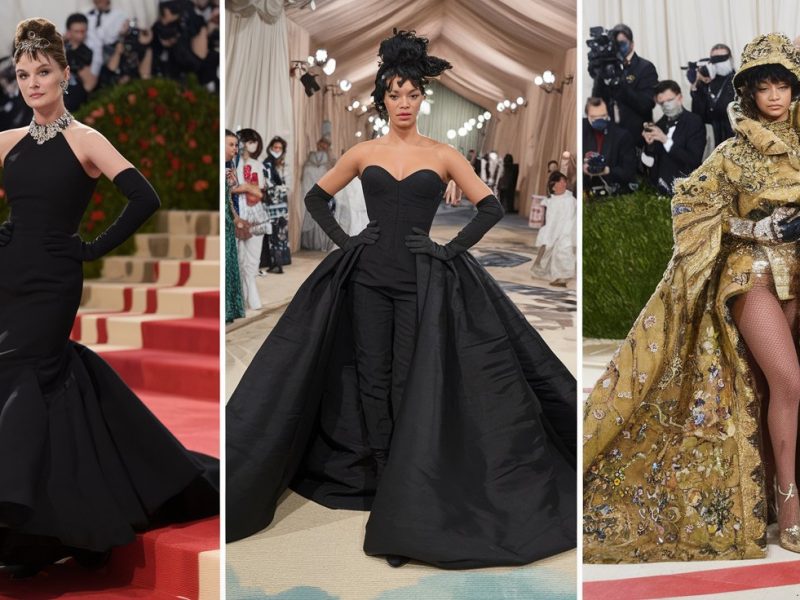The Origin of the Cardigan and Its Timeless Popularity
A cardigan may seem like a simple piece of clothing—often soft, open in the front, and worn over shirts or dresses. But behind its basic appearance lies a meaningful history tied to both function and fashion. From the battlefield to global fashion stages, the cardigan has secured its spot in wardrobes across generations.
This article discusses how the cardigan came to be, how it shaped its place in clothing history, and why people around the world still wear it today.
Quick Overview:
- The cardigan started as part of a military uniform in the 19th century.
- It became a fashion staple in Europe and America in the early 20th century.
- Today, it’s a symbol of comfort, flexibility, and personal style.
- Fashion icons like Coco Chanel and Kurt Cobain helped make it famous.
- It remains a must-have item because of its ability to match various styles and seasons.
Roots in Wartime History
The term “cardigan” was named after James Brudenell, the 7th Earl of Cardigan. He led the Charge of the Light Brigade during the Crimean War in 1854. Beyond his military legacy, he also became linked to this iconic clothing piece.
Back then, soldiers wore woolen jackets that opened in the front, which made it easier to remove or adjust them quickly. These garments were designed to keep soldiers warm while allowing ease of movement. Because of their practicality, these jackets evolved and were adapted into everyday fashion across Europe.
Becoming Casual Fashion in the 1900s
By the early 20th century, cardigans gradually entered the casual fashion scene. Coco Chanel was among the first major figures to popularize it. She used the cardigan as a lighter alternative to the stiff and heavy women’s blouses of the time.
It came to represent freedom for women—a soft yet refined layer that allowed movement and comfort. In the U.S., cardigans became a part of collegiate fashion during the 1950s. Students often wore button-down cardigans as a symbol of sophistication and educational identity.
From Rebellion to Musical Identity
The cardigan wasn’t reserved for just high society. From the 1960s through the 1990s, it became linked to personal expression and non-traditional styles. Musicians and artists wore cardigans to reflect their views and personality.
One lasting image is Kurt Cobain of Nirvana. During live shows, he often wore oversized, faded cardigans—capturing the essence of grunge. Rather than aiming for neatness, he used the garment to show vulnerability and defy mainstream fashion standards.
Styles That Have Marked Different Eras
Cardigans have transformed throughout the decades. Here are a few styles that stood out:
- Chunky Knit Cardigans – Popular in colder climates. These are often seen in Northern America and parts of Scandinavia.
- Cropped Cardigans – A hit in the 1950s and again during the Y2K fashion comeback.
- Belted Cardigans – Designed to flatter the waist, these are often found in editorial looks.
- Oversized Cardigans – Common in streetwear and minimalist fashion starting in the 2010s.
This flexibility is what makes the cardigan a constant presence in style trends.
Modern Adaptations in Global Fashion
Whether it’s Milan, New York, or Tokyo fashion week, cardigans continue to appear on the runway—often with creative updates. Some feature asymmetrical cuts, bold color blocks, or eco-conscious materials.
Well-known fashion houses like Gucci, Prada, and Dior craft their versions of the classic cardigan. Meanwhile, popular brands such as Uniqlo, H&M, and Zara offer budget-friendly designs for a broader market.
Designers now use the cardigan to reflect clothing without labels. Many modern versions are unisex and designed with fluidity in mind, expressing inclusion through a modest sweater.
In streetwear, cardigans now pair with sneakers, cargo pants, or bucket hats. On the red carpet, actors have worn custom cardigans styled with tailored trousers, giving the garment new dimension. Even luxury collections sometimes open with a cardigan-centric look, a quiet signal that simplicity can stand out.
Why It Continues to Win Hearts
What exactly keeps the cardigan relevant for so long?
To start, it’s easy to pair with anything. It can be worn over dresses, take the place of a blazer, or serve as a relaxed layer with jeans.
Next, it’s comfortable. Whether made of light cotton or warm cashmere, its materials can match different seasons and temperatures.
It can also fit any lifestyle. From college students to business professionals, there is a version that works. Some prefer neutral tones and fine knits, while others enjoy the bold prints or patchwork designs.
Finally, many people have a sentimental link to cardigans. They’re often handed down from grandparents or parents. Some even view it as a keepsake—clothing that carries emotional weight.
Cardigans in Film and Television
The cardigan has made frequent appearances in movies and television. It’s often used as a costume choice to represent certain character traits.
In American series, intellectual or soft-spoken characters are often shown wearing cardigans. In British films, it’s common in countryside-themed visuals.
Characters who wear cardigans often feel approachable. They may be seen as nurturing, thoughtful, or simply calm. Costume designers use this item to signal subtle emotion, much like how lighting or dialogue shape a scene.
Pop icons like Taylor Swift and Harry Styles have reintroduced cardigans to younger generations. Through social media, this piece has gained an even larger following across age groups.
How to Choose the Right Cardigan
Here are a few practical tips when selecting a cardigan that suits your personality and needs:
Consider the Purpose: Will it be worn for warmth or mainly as part of a style?
Choose the Right Fabric: Wool or cashmere works well for colder months, while cotton or linen blends are better for warmer days.
Think About the Fit: Do you prefer a fitted look for structure, or a loose fit for a more casual feel?
Play with Color: Stick with neutrals for timeless appeal or try vibrant colors for something expressive.
Look at sleeve length too—some modern cardigans feature short sleeves, while others go full-length or have thumbholes. Hemlines can vary, and even buttons or zippers can make a difference. Little details shift the tone from cozy to chic or from polished to experimental.
The right cardigan is more than just an item in your wardrobe—it’s a piece that helps express who you are.
Keeping the Cardigan’s Legacy Alive
Over time, the cardigan has proven that it’s more than just clothing. It carries meaning, style, and a sense of ease. It adapts well to the pace of modern life—whether in professional settings or during restful weekends.
This piece also aligns with values of long-term use and sustainability. Because of its durability, it often lasts for years, fitting into the growing preference for slow fashion. Many people are now choosing garments that offer quality and value over passing trends.
Even among younger consumers, cardigans are now seen not only as practical but stylish. They can be thrifted, repurposed, and combined with new trends. With the growing awareness about fashion waste, this garment offers a meaningful option.
Repairs and customizations are also common. Patches, embroidery, and dyeing allow wearers to create one-of-a-kind pieces that tell personal stories. A single cardigan can go through many lives, shaped by each person who wears it.
The beauty of a cardigan lies in its ability to blend in or stand out, depending on how it’s worn. Its adaptability makes it a wardrobe favorite for those who enjoy styling both timeless and fresh looks. Many style guides now feature cardigans as go-to essentials, highlighting their role in seasonal wardrobes.
The cardigan continues to evolve. Styles and materials change, but its original purpose remains—to provide warmth, personality, and comfort to those who wear it.
The cardigan is a reminder that fashion doesn’t always need to be complex or loud. Sometimes, the simplest items become the most lasting and meaningful.


